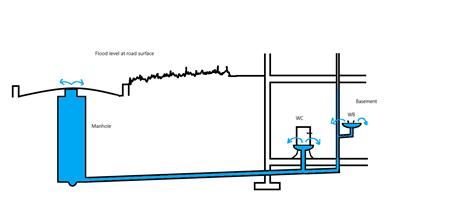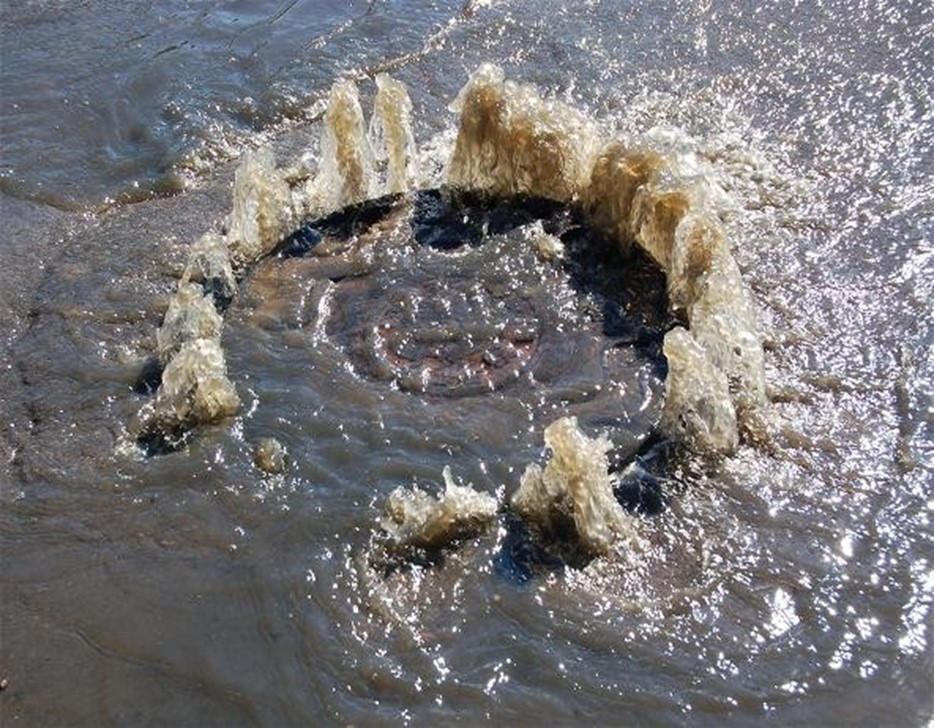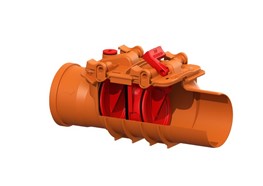Anti-flooding devices for buildings
Where a building is served by a combined sewer system (a single drain for both surface and wastewater) foul water can backflow from the below-ground drainage system upstream towards the building in certain circumstances.
If a sewer surcharges it can result in this backflow of water and sewage to flood a building from the inside, through fittings such as toilets, showers, or gullies.
This can happen where fittings are installed at a lower level than the manhole cover serving the sewer outside of the building; for example, in a basement.

Manholes are typically found in the road and, in the absence of specific local information, the road level is known as the flood level. A sewer can surcharge to the flood level where the capacity of the drainage system is overburdened by the water and/or sewage discharged into it. If this happens, it is usually during heavy rainfall.

Manhole failure (image from renewalpipe.com)
Preventing floods
If the risk of surcharge is considered to be low, one solution is to install an anti-flooding device. The device should conform to BS EN 13564 and should preferably be a double valve type. It should be installed on the drain run serving the low-level fittings and any higher-level fittings should not discharge via the anti-flood device. These devices also protect against blockages where these occur downstream of the valve. The utilities company that owns the sewer should be able to provide information of the relative risk of the sewer surcharging.

Kessel 73150 160mm double flap non-return valve / anti-flood valve with emergency closure - image from Drainstore
The valves are typically in the closed position and discharges from the building drainage system will manually open them. In a flood surcharge condition, the reverse flow of water towards the building forces the (first) valve shut and preventing the further passage of water upstream.

Ideally, an anti-flooding device will be installed in its own sealed access fitting to allow manual activation should the automatic process fail to operate. Regular six-monthly maintenance is required as the valves can fail to seal properly, particularly if the gradient approaching the device is insufficient to keep the valve clear of all solid deposits. Personnel access should be provided where the necessary maintenance or activation cannot be carried out at ground level (refer to access point recommendations in Approved Document H).
Sign up to the building bulletin newsletter
Over 48,000 construction professionals have already signed up for the LABC Building Bulletin.
Join them and receive useful tips, practical technical information and industry news by email once every 6 weeks.
Subscribe to the Building Bulletin




Comments
Research
Submitted 1 year 11 months ago
Add new comment